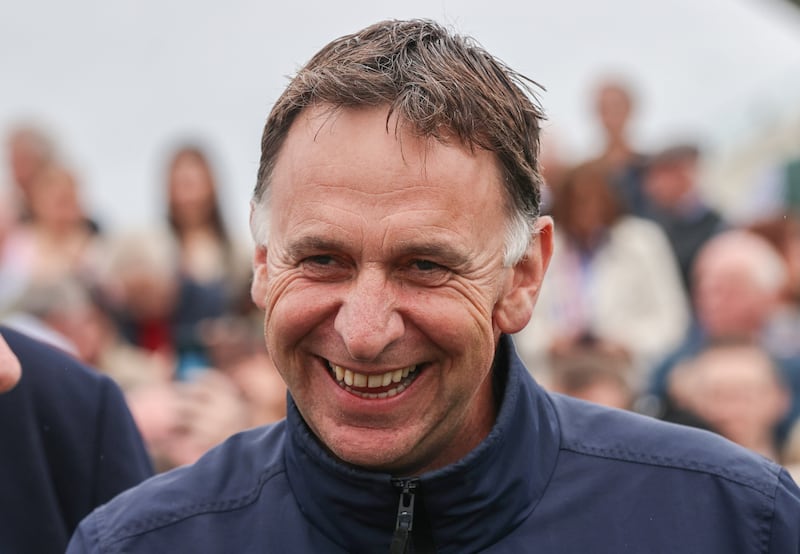There are times when Irish racing’s capacity for shooting itself in the foot is matched only by a flair for internecine conflict. And then there are times when they combine to produce a sweet spot of reputational self-harm, such as the current threat from jump racing’s top four trainers to take Horse Racing Ireland to court.
It’s because of HRI’s plans to restrict 60 races in the 2025 National Hunt programme to trainers who have saddled fewer than 50 winners in either of the previous two seasons. It’s ostensibly an attempt by racing’s ruling body to increase opportunities for the sport’s small fry in the face of dominance by Willie Mullins, Gordon Elliott, Henry De Bromhead and Gavin Cromwell.
The statistical context is that about 1,500 National Hunt races are run annually in Ireland. Last season Mullins saddled a record 257 winners. Elliott had 207. De Bromhead (89) and Cromwell (72) filled out racing’s equivalent of tennis’ former “big four”. Inevitably, they also took the lion’s share of the prize money. Competing with that is no easy task and plenty have stopped trying to.
The political context of HRI’s move includes parliamentary disquiet at how most of the State funding given to racing goes towards prize money and how much of that ends up in the hands of a tiny minority of leading players. That has put an onus on HRI to do something, but not, obviously, anything too dramatic that might frighten the horses.
Asking for more public cash to boost prize money is worryingly shortsighted
Grand National runner Celebre d’Allen died with severe respiratory infection
Grand National party shows no sign of ending for jubilant Mullins
Willie Mullins readies Ayr squadron as handler zeroes in on British champion trainer title
It means these 60 races are essentially a token exercise. Really, it’s only 43 new ones. However, it allows HRI to point to something when they come under fire before some Oireachtas committee. It’s little more than a tweak but better than nothing when faced with politicos pointing out how trickledown economics raise only a few elite boats, no matter what the sector.
Since HRI is getting €76 million of State funding this year, and Irish racing has enjoyed huge sums of Government support for well over two decades, such political manoeuvring isn’t irrelevant.
In a wider environment when mortgaging your soul still isn’t enough to own the roof over your head, racing is an increasingly tough sell when it comes to deserving cases for support, particularly on the back of a sorry back catalogue of incidents that have rocked public confidence in the sport’s governance and administration.
So, HRI fiddled with the race planning, cleared things with the relevant bodies, got its press release ready with full bells and whistles, and released it just before the Galway festival. Since when, the big four appear to have gone Defcon 2 on the prospect of being excluded from a relatively tiny slice of the pie.

They’re not talking publicly but have privately let it be known how solicitors’ letters have winged their way to HRI. It might be sabre rattling, a warning to not expand this idea in the future, or it might not be. But what’s sure is that the applecart hasn’t been so much upset as tipped over and stamped on.
If the big four aren’t talking, others are. The trainer who was fifth in last year’s table, Philip Rothwell – racing’s own Stan Wawrinka – has suggested more races for lower grade horses instead. Some have said penalising people for being successful is wrong, a free-market approach curiously at odds with racing’s annual demands for more Government money. Inevitably, most have angled for positions that best serve themselves.
The entire episode demands questions as to how all this was allowed occur in the first place. Did anyone bother to pick up the phone to Mullins and co before all this was announced? All of which doesn’t deflect from how the big four’s response to an essentially light-touch gesture in dealing with a substantial competition issue appears wildly disproportionate.
Restricted races are everywhere. There are races reserved for every sort of category of age, sex and purchase price, just as there are for apprentice jockeys and lady riders. There have even been contests for only grey coloured horses. These are constructs that sometimes are far more artificial than the statistical case HRI is proposing in this case.
Perhaps the sole consensus in all this is how it is a terrible look. Racing is obviously not homogenous, and this is a glimpse into how ruthlessly competitive it is. But HRI is the semi-State body charged by Government with steering the ship and it is in the industry’s vital self-interest to keep political parties of all stripes onside as much as possible.
So how big a gaffe is it to have a scenario where four of the most powerful figures in the sport threaten the Government’s administrative arm simply because they don’t like the idea of being excluded from a small percentage of races that might at least throw some few quid of state funded prize money to others.
If mightn’t come across as grubby but it certainly looks grabby; all of which is hardly likely to make life easier next time racing goes pleading its case for more money.
SOMETHING FOR THE WEEKEND: It is highly doubtful any of the others in today’s Lonsdale Cup could have got within two lengths of winning last month’s Group One Grand Prix de Saint-Cloud. Before that Point Lonsdale (2.25) put up a stylish Ormonde Stakes winning display at Chester over just half a furlong shorter than this test, looking no more impressive than at the line. He’s top-rated officially, the Ballydoyle team are flying, and the horse is notably consistent. It’s hard not to love his chance.
Camille Pissaro (3.00) goes in the following Gimcrack Stakes. He shook up Babouche in the Anglesey which ties him into the strongest juvenile form around. A stall one draw isn’t great, but the favourite Big Mojo is next to him.















